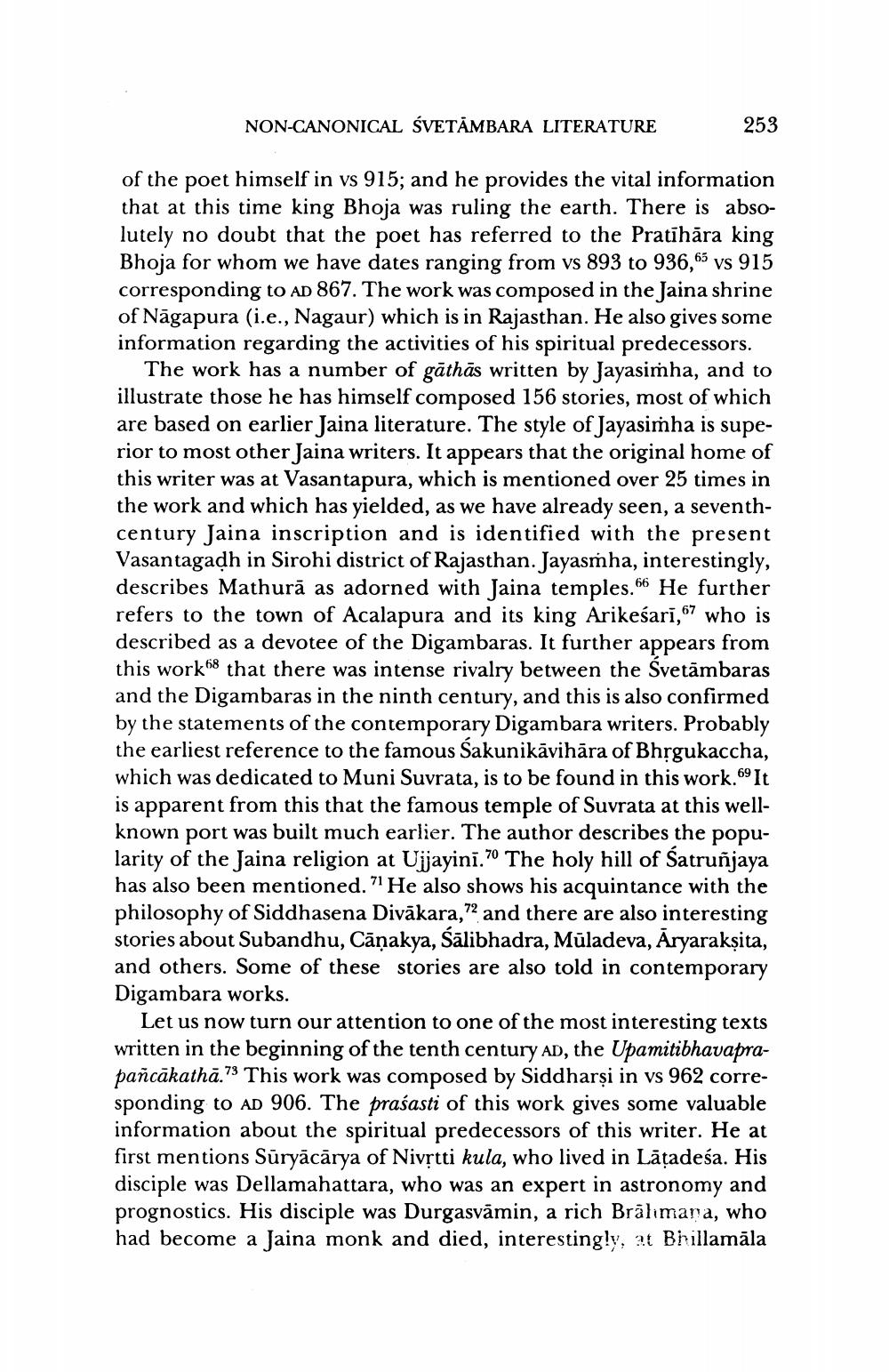________________
NON-CANONICAL SVETAMBARA LITERATURE
253
of the poet himself in vs 915; and he provides the vital information that at this time king Bhoja was ruling the earth. There is absolutely no doubt that the poet has referred to the Pratīhāra king Bhoja for whom we have dates ranging from vs 893 to 936,65 vs 915 corresponding to AD 867. The work was composed in the Jaina shrine of Nāgapura (i.e., Nagaur) which is in Rajasthan. He also gives some information regarding the activities of his spiritual predecessors.
The work has a number of gāthās written by Jayasimha, and to illustrate those he has himself composed 156 stories, most of which are based on earlier Jaina literature. The style of Jayasimha is superior to most other Jaina writers. It appears that the original home of this writer was at Vasantapura, which is mentioned over 25 times in the work and which has yielded, as we have already seen, a seventhcentury Jaina inscription and is identified with the present Vasantagadh in Sirohi district of Rajasthan. Jayasṁha, interestingly, describes Mathurā as adorned with Jaina temples. 66 He further refers to the town of Acalapura and its king Arikeśarī,67 who is described as a devotee of the Digambaras. It further appears from this work h8 that there was intense rivalry between the Svetāmbaras and the Digambaras in the ninth century, and this is also confirmed by the statements of the contemporary Digambara writers. Probably the earliest reference to the famous Sakunikāvihāra of Bhrgukaccha, which was dedicated to Muni Suvrata, is to be found in this work.69 It is apparent from this that the famous temple of Suvrata at this wellknown port was built much earlier. The author describes the popularity of the Jaina religion at Ujjayini." The holy hill of Satruñjaya has also been mentioned. He also shows his acquintance with the philosophy of Siddhasena Divākara,72 and there are also interesting stories about Subandhu, Cāņakya, Sālibhadra, Müladeva, Aryarakṣita, and others. Some of these stories are also told in contemporary Digambara works.
Let us now turn our attention to one of the most interesting texts written in the beginning of the tenth century AD, the Upamitibhavaprapañcākathā." This work was composed by Siddharși in vs 962 corresponding to AD 906. The praśasti of this work gives some valuable information about the spiritual predecessors of this writer. He at first mentions Sūryācārya of Nivrtti kula, who lived in Lätadeśa. His disciple was Dellamahattara, who was an expert in astronomy and prognostics. His disciple was Durgasvāmin, a rich Brālimana, who had become a Jaina monk and died, interestingly, at Brillamāla




